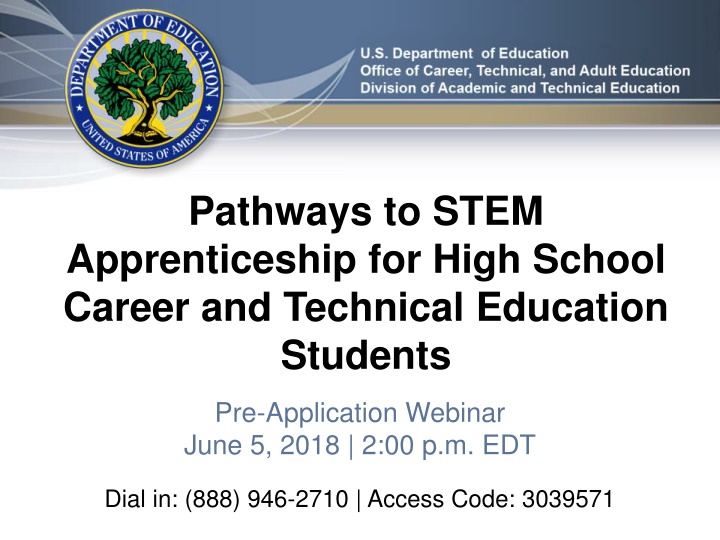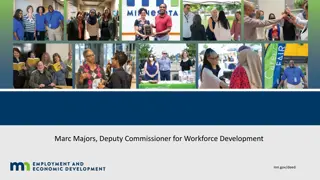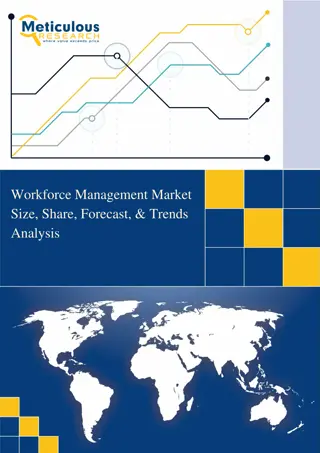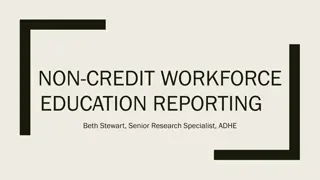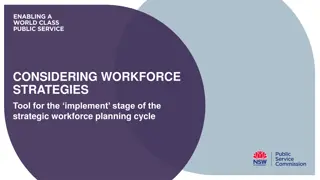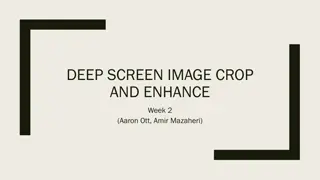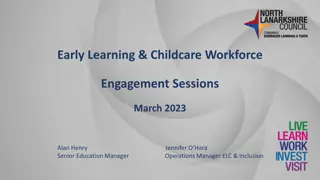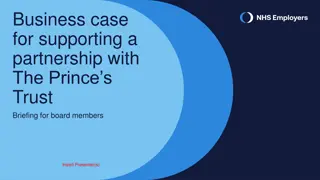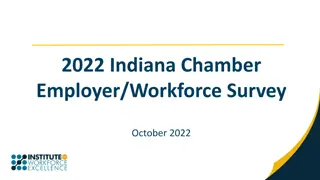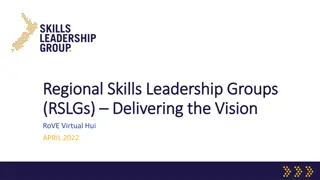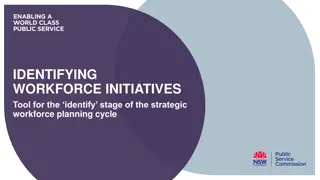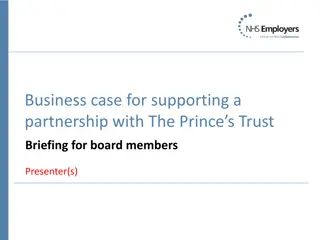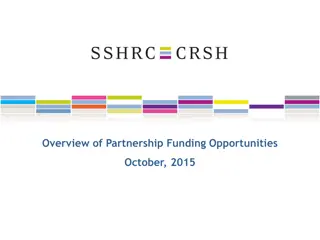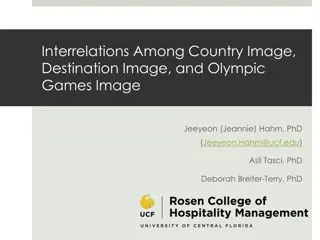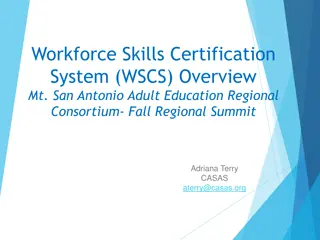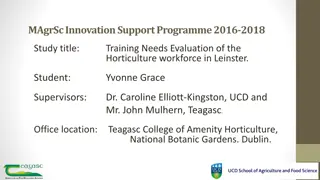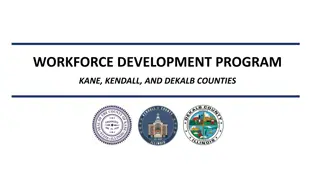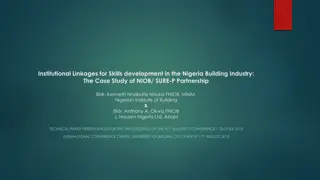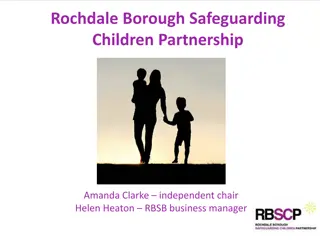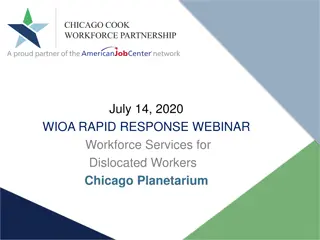Home Building Skills Partnership: Improving Industry Image and Workforce Engagement
Home Building Skills Partnership aims to reposition the image of the home building industry, attract a diverse workforce, enhance industry skills, promote collaboration, and establish a sustainable partnership model. With 72 companies committed to the Home Building Skills Pledge, the industry is focused on aligning key stakeholders, sharing resources, and fostering collective growth.
Download Presentation

Please find below an Image/Link to download the presentation.
The content on the website is provided AS IS for your information and personal use only. It may not be sold, licensed, or shared on other websites without obtaining consent from the author.If you encounter any issues during the download, it is possible that the publisher has removed the file from their server.
You are allowed to download the files provided on this website for personal or commercial use, subject to the condition that they are used lawfully. All files are the property of their respective owners.
The content on the website is provided AS IS for your information and personal use only. It may not be sold, licensed, or shared on other websites without obtaining consent from the author.
E N D
Presentation Transcript
Pathways to STEM Apprenticeship for High School Career and Technical Education Students Pre-Application Webinar June 5, 2018 | 2:00 p.m. EDT Dial in: (888) 946-2710 | Access Code: 3039571
Documents for Todays Discussion Pathways to STEM Apprenticeship for High School Career and Technical Education (CTE) Students Federal Register Notice Inviting Applications Pathways to STEM Apprenticeship application package (CFDA 84.051E): http://www.grants.gov 2
Topics to be covered Federal Register Notice Program Purpose Award Information Eligibility Absolute Priority Invitational Priority Program Requirements Application Requirements Selection Criteria Performance Measures Application/Instructions Submission Deadline Grants.gov Submission Procedures/Tips The Application 3
Apprenticeship: An Important Postsecondary Option Combines paid on-the-job learning with related CTE instruction Apprentices incur little or no debt, at a time when many college students are graduating deeply in debt
Apprenticeship A Career Preparation Alternative Average income for someone who has completed an Apprenticeship program is $60,000 However, few young people are pursuing Apprenticeship opportunities in high school or immediately following high school graduation
Purpose of the Initiative to support State efforts to expand and improve the transition of high school CTE students to postsecondary education and employment through apprenticeships in science, technology, engineering, and mathematics (STEM) fields, including computer science, that begin during high school. 6
Award Estimates Type of Award: Competitive Grants Estimated Number of Awards: 5 Estimated Range of Awards: $500,000 to $750,000 Average Award Size: $600,000 for project Project Period: 36 months The U.S. Department of Education (ED) is not bound by any of these estimates. 7
Key Deadlines Notice of Intent to Apply deadline: June 18, 2018 o We will be able to develop a more efficient process for reviewing grant applications if we have a better understanding of the number of applications that we will receive. The notice of intent to apply is optional. o Send an e-mail to PathwaystoApprenticeship@ed.gov with Intent to Apply in the e-mail subject line. Application deadline: Thursday, July 17, 2018 8
Eligible Applicants Eligible Applicants are -- (a)A State board designated or created consistent with State law as the sole State agency responsible for the administration of CTE in the State or for the supervision of the administration of CTE in the State; or (b) A consortium of the above State entities. 9
Absolute Priority There is one Absolute Priority for this competition. (Page-*** of the Federal Register Notice) Your application must meet the Absolute Priority in order to be considered for funding. Any application that does not meet the priority will not be reviewed by a panel. 10
Absolute Priority Absolute Priority: Promoting STEM Education, With a Particular Focus on Computer Science Applicants must propose a project designed to improve student achievement or other educational outcomes in one or more of the following areas: science, technology, engineering, math, or computer science. The project must create or expand partnerships between schools, local educational agencies, State educational agencies, businesses, not-for-profit organizations, or institutions of higher education to give students access to internships, apprenticeships, or other work-based learning experiences in STEM fields, including Computer Science. 11
Invitational Priority Rural Local Educational Agencies (LEAs) The Secretary is particularly interested in receiving applications that propose a state-wide or regional approach to increasing the number of high school CTE students who begin to participate in Apprenticeships in STEM fields, including Computer Science, during high school in LEAs that are eligible for assistance under the Small Rural School Achievement (SRSA) program or the Rural and Low-Income School (RLIS) program authorized under Title VI, Part B of the Elementary and Secondary Education Act of 1965, as amended. * Responding to the invitational priority does not result in earning bonus points 12
Program Requirement 1- Partnership A grantee must carry out a Pathways to STEM Apprenticeship grant in collaboration with (a) At least one employer in the State that has committed to implementing Apprenticeships; and (b) One or more postsecondary partners, such as the State Agency for Higher Education, or one or more Postsecondary Educational Institutions. 13
Application Requirement 1 Letter of Commitment from Postsecondary Partner Each applicant must identify its postsecondary partner or partners, such as a State Agency for Higher Education, or a Postsecondary Educational Institution or Institutions, in its application and include a letter of commitment from each postsecondary partner. 14
Application Requirement 2 Employer Partner Letter of Commitment Each applicant must include a letter of commitment from each employer partner. 15
Program Requirement 2- Comprehensive Strategy Implementation of a Comprehensive STEM Apprenticeship Pathway Strategy for High School CTE Students: A grantee must carry out a comprehensive Pathways to STEM Apprenticeship grant strategy that seeks to increase the number of CTE Students who participate in Competency-Based Apprenticeships while enrolled in high school. 16
Program Requirement 2- Comprehensive Strategy Competency-Based Apprenticeship means an Apprenticeship program that enables apprentices to progress through and complete the program by demonstrating mastery of the knowledge and skills taught in the program, rather than complete a minimum number of work or instructional hours. 17
Program Requirement 2 Comprehensive Strategy (continued) Such strategies must be designed to-- (1) Give State, regional, or local employers a leadership role in designing, expanding, and implementing the strategy; and (2) Address barriers to participation in Competency-Based Apprenticeships for Special Populations, which may include: (A) Individuals with disabilities; (B) Individuals from economically disadvantaged families, including foster children; 18
Program Requirement 2 Comprehensive Strategy (continued) (2) Special Populations (continued): (C) individuals preparing for occupations or fields of work, including careers in computer science, technology, and other current and emerging high skill occupations, for which individuals from one gender comprise less than 25 percent of the individuals employed in each such occupation or field of work; (D) single parents, including single pregnant women; (E) displaced homemakers; (F) individuals with limited English proficiency. 19
Program Requirement 2 Comprehensive Strategy (continued) Such strategies may include-- (1) Providing technical assistance to entities such as LEAs, postsecondary educational institutions, and employers; (2) Coordinating State-level or multi-State-level efforts to expand Competency-Based Apprenticeship opportunities for high school CTE Students, such as through coordination with other entities, such as a State Apprenticeship agency, or with industry and labor organizations and businesses to develop Competency- Based Apprenticeship programming in new sectors or industries; 20
Program Requirement 2 Comprehensive Strategy (continued) (3) Developing or supporting the development of curricula that can be used for the related CTE instruction component of Competency-Based Apprenticeship programs; (4) Providing support for professional development for teachers, postsecondary instructors, employers, training providers, and others to promote the development and implementation of new Competency-Based Apprenticeship opportunities; 21
Program Requirement 2 Comprehensive Strategy (continued) (5) Supporting the development and implementation of articulation agreements and other processes to award postsecondary credit for the completion of CTE courses and Competency-Based Apprenticeship programs, such as dual credit and transcripted credit; (6) Providing information about Competency-Based Apprenticeship opportunities to the public, including to students and their families; 22
Program Requirement 2 Comprehensive Strategy (continued) (7) Providing subgrants to LEAs and postsecondary educational institutions to assist in creating or expanding opportunities for CTE Students to participate in Competency-Based Apprenticeships beginning in high school; and (8) Other activities that are designed to increase opportunities for high school CTE Students to participate in Competency-Based Apprenticeships beginning in high school. 23
Selection Criteria The maximum total score for all of the selection criteria is 100 points. a) Quality of the project design (45 points) b) Quality of the management plan (25 points) c) Adequacy of resources (30 points) 24
Selection Criteria (a) Quality of the project design (45 points) The Secretary considers the quality of the project design. In determining the quality of the project design for the proposed project, the Secretary considers (1) The likelihood that the proposed project will result in system change or improvement. (up to 15 points) (2) The extent to which the proposed project will integrate with or build on similar or related efforts to improve relevant outcomes (as defined in 34 CFR 77.1(c)), using existing funding streams from other programs or policies supported by community, State, and Federal resources. (up to 15 points (3) The extent to which the services to be provided by the proposed project involve the collaboration of appropriate partners for maximizing the effectiveness of project services. (up to 15 points) 25
Selection Criteria (b) Quality of the management plan (25 points) The Secretary considers the quality of the management plan for the proposed project. In determining the quality of the management plan for the proposed project, the Secretary considers The adequacy of the management plan to achieve the objectives of the proposed project on time and within budget, including clearly defined responsibilities, timelines, and milestones for accomplishing project tasks. 26
Selection Criteria (c) Adequacy of resources (30 points) The Secretary considers the adequacy of resources for the proposed project. In determining the adequacy of resources for the proposed project, the Secretary considers (1) The extent to which the budget is adequate to support the proposed project. (up to 10 points) (2) The relevance and demonstrated commitment of each partner in the proposed project to the implementation and success of the project. (up to 10 points) (3) The potential for continued support of the project after Federal funding ends, including, as appropriate, the demonstrated commitment of appropriate entities to such support. (up to 10 points) 27
Performance Measures Pathways to STEM Apprenticeship performance measures: (a) The total number and percentage of CTE Students enrolled in project activities during the grant period, including CTE Students in Apprenticeships funded under this project and other grant activities. (b) The total number and percentage of CTE Students enrolled in high school and participating in Apprenticeships funded under this project. 28
Performance Measures (continued) (c) The total number and percentage of CTE Students enrolled in high school and participating in Apprenticeships funded under this project who are identified as members of a Special Population. (d) The total number and percentage of CTE Students enrolled in high school and participating in Apprenticeships funded under this project who complete high school. (e) The total number and percentage of CTE Students enrolled in high school and participating in Apprenticeships funded under this project who earn postsecondary credits during enrollment in the project. 29
Remember! Applications must be submitted via Grants.gov Applications must be submitted before the deadline: 4:30pm Eastern Time on JULY 17, 2018 30
The Application If you haven t read the Federal Register Notice, download it today. Go to grants.gov and download the application and instructions TODAY. Read the Grants.gov Submission Procedures and Tips for Applicants. 31
The Application Register EARLY Submit EARLY VERIFY your submission 32
Application Format Application for Federal Assistance (SF 424) Department of Education Supplemental Information for SF 424 Department of Education Budget Summary Form (ED 524) Sections A & B Disclosure of Lobbying Activities (SF-LLL) GEPA Section 427 Assurances Non-Construction Programs (SF 424B) Grants.gov Lobby form (formerly ED 80-0013 form) ED Standard Forms Assurances and Certifications ED Abstract Narrative Form Project Narrative Form Budget Narrative Form Other Attachments Form (Upload Appendices here) Narrative Commitment letters from partners Requirements Key personnel resumes Indirect Cost Rate agreement Other items 33
Budget Narrative In accordance with 34 CFR 75.232, Department of Education staff perform a cost analysis of the each recommended project to ensure that costs relate to the activities and objectives of the project, are reasonable, allowable and allocable. We may delete or reduce costs from the budget during this review. 34
Budget Narrative The budget narrative should be consistent with the ED 524 budget Form and should -- Give an itemized budget breakdown for each year of the proposed project (36 months); Show the basis for estimating the costs of personnel salaries, benefits, project staff travel, materials and supplies, consultants and subcontracts, indirect costs and any other projected expenditures; Show the relationship between the requested funds and project activities and outcomes; Show the total amount that will be expended as shown in the ED 524 Form; Enable reviewers and project staff to understand how the requested funds in the ED 524 Form will be used. 35
Important Documents Federal Register Notice Application/Instructions ED Forms/Instructions 36
Contact Information Pathways to STEM Apprenticeship Mailbox: PathwaystoApprenticeship@ed.gov Contact: Erin Berg Erin.Berg@ed.gov 202-245-6792 37
